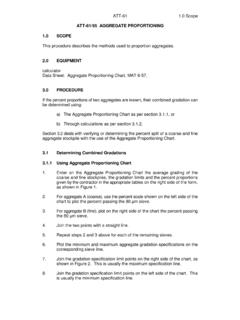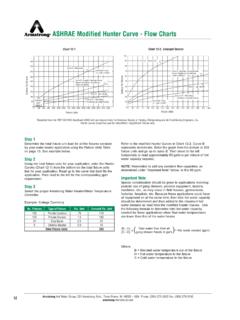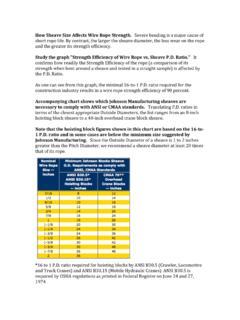Transcription of POSTERIOR PELVIC TILT - Access to Independence
1 POSITIONING chart PROBLEM POSSIBLE CAUSE SUGGESTIONS FOR INTERVENTION GOALS Jessica Presperin Pedersen, OTR/L, MBA, ATP and Michelle L. Lange, OTR, ABDA, ATP. 2/01 . POSTERIOR PELVIC tilt top of the pelvis is tipped backward low abdominal/trunk tone provide support to POSTERIOR superior surface of the pelvis to block backward movement anteriorly sloped seat drop the footrests to allow hip extension biangular back, PSIS pad neutral alignment of the pelvis support anatomical curvatures of the spine ( prevent kyphosis)
2 Promote weight bearing on ischial tuberosities, reduce pressure risks best alignment for biomechanical function tight hamstrings open seat to back angle and/or decrease thigh to calf angle ( of trunk musculature) increase proximal stability for function depth of wheelchair seat cushion or platform is too long provide appropriate seat depth to allow hip and knee flexion. limited range of motion, particularly limited hip flexion accommodate fixed limitation in hip flexion by opening seat to back angle greater than 90 degrees accommodate asymmetries with contoured or molded seating system sliding forward on seat provide anti-thrust or aggressively contoured seat stabilize pelvis using appropriately angled PELVIC belt or anterior PELVIC stabilizer ( subASIS bar)
3 Change upholstery type extensor thrust PELVIC stabilization using appropriately angle PELVIC positioning belt or rigid anterior PELVIC restraint anti-thrust seat or aggressively contoured seat change position in space if thrust is caused by tonic labyrinthine reflex increase hip and knee flexion, hip abduction and ankle dorsiflexion anterior knee blocks conserve energy reduce friction maintain alignment with other components ANTERIOR PELVIC tilt top of the pelvis is tipped forward low trunk tone muscle weakness lordosis place PELVIC positioning belt across ASIS sub ASIS bar positioned in front of ASIS belly binder or corset see interventions for lordosis reduce lordosis neutral alignment of the pelvis promote weight bearing on ischial tuberosities best
4 Alignment for biomechanical This watermark does not appear in the registered version - chart PROBLEM POSSIBLE CAUSE SUGGESTIONS FOR INTERVENTION GOALS Jessica Presperin Pedersen, OTR/L, MBA, ATP and Michelle L. Lange, OTR, ABDA, ATP. 2/01 . function increase proximal stability for function PELVIC ELEVATION pelvis moves upward off seating surface extensor tone discomfort extensor thrust interventions 4 point seatbelt remove leverage from under feet: hinged footrest hangers dynamic footrest hangers or footplates remove footplates conserve energy reduce shear maintain alignment with other components provide consistent positioning for Access PELVIC ROTATION one side of the pelvis is forward ROM limitation in the hip abduction adduction hip flexion windswept posture align pelvis in neutral and accommodate asymmetrical lower extremity posture neutral alignment of pelvis support anatomical curvatures of the spine ()
5 Prevent kyphosis) promote weightbearing on ischial tuberosities, reduce pressure risks best alignment for biomechanical function ( of trunk musculature) fixed limitations in spine, pelvis, and/or femoral mobility ( rotational scoliosis) pelvis may need to assume asymmetrical posture in order to keep head and shoulders in neutral position increase proximal stability for distal function prevent subsequent trunk rotation unequal thigh length hip dislocation check measurement from the pelvis to the plane of the popliteal fossa with the pelvis in neutral position, if possible create an appropriate seat surface depth for each limb.
6 If fixed increase pressure distribution over POSTERIOR trunk asymmetrical surface contract over POSTERIOR buttocks and trunk create contour back surface to fill-in , if fixed discomfort identify source and remediate, or refer to physician tone and/or reflex activity ATNR use positioning such as lower extremity abduction with hip, knee flexion, and ankle dorsiflexion pull PELVIC belt back on forward side of pelvis increase thickness of padding of PELVIC belt on forward side POSTERIOR block on retracted side rigid PELVIC positioner This watermark does not appear in the registered version - chart PROBLEM POSSIBLE CAUSE SUGGESTIONS FOR INTERVENTION GOALS Jessica Presperin Pedersen, OTR/L, MBA, ATP and Michelle L.
7 Lange, OTR, ABDA, ATP. 2/01 . anterior knee block on forward side anti-thrust seat aggressively contoured, if fixed This watermark does not appear in the registered version - chart PROBLEM POSSIBLE CAUSE SUGGESTIONS FOR INTERVENTION GOALS Jessica Presperin Pedersen, OTR/L, MBA, ATP and Michelle L. Lange, OTR, ABDA, ATP. 2/01 . PELVIC OBLIQUITY one side of the pelvis is higher scoliosis ATNR surgeries discomfort change angle of pull of PELVIC belt use different foam densities (denser under low side) wedge.
8 Under low side to correct, under high side to accommodate best alignment for biomechanical function ( of trunk musculature) level pelvis equalize pressure under pelvis prevent subsequent trunk lateral flexion reduce fixing to increase function PAINFUL OR DISLOCATED HIP increased muscle tone poorly formed socket surgeries use softer materials under and/or around hip avoid lateral contact with hip provide lateral support along distal thigh determine what positions relieve discomfort comfort PELVIC AMPUTATION Hemipelvictomy Sacral Agenesis generally an orthotic is made cushion is straight
9 Forward as the orthotic is being positioned if no orthotic, then molded seating system neutral alignment of trunk over pelvis support anatomical curvatures of the spine pressure distribution best alignment for biomechanical function increase proximal stability LATERAL TRUNK FLEXION OR SCOLIOSIS scoliosis may be C curve, S curve, and/or rotational increased tone on one side musculature imbalance, may have PELVIC involvement decreased trunk strength or decreased tone, causing asymmetrical posture habitual posturing for functional activity or stability fixed scoliosis if flexible: generic contoured back lateral trunk supports (may need to be asymmetrically placed, one lower at the apex of lateral convexity) anterior trunk supports to correct any rotation (see forward trunk flexion interventions) if fixed.
10 Refer to physician to explore medical or surgical procedures, x-rays TLSO aggressively contoured or molded back to allow for fixed curvature of spine and/or rib cage horizontal tilt under seat to right head, if pressure distribution is good neutral alignment of trunk over pelvis, if flexible minimize subsequent deformity in PELVIC and lower extremity posture level head over trunk for increased vision, social interaction pressure distribution This watermark does not appear in the registered version - chart PROBLEM POSSIBLE CAUSE SUGGESTIONS FOR INTERVENTION GOALS Jessica Presperin Pedersen, OTR/L, MBA, ATP and Michelle L.







